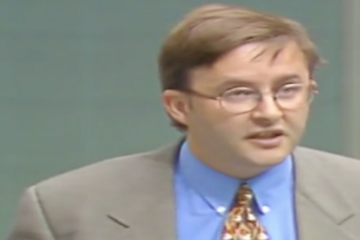60 Reasons to Protest: Reason #49 – No Incentives for Reducing Aviation Noise
Are you also able to tell a Jetstar plane from the rest of them? BFPCA has heard many complaints about a particular high-pitch, annoying sound emanating from the Airbus A320 family of aircraft. It’s the main one Jetstar uses with 102 A320 family aircraft in its fleet. This whining sound is heard large distances as the aircraft is descending and approaching for landing, and caused by an Airbus design flaw known for more than a decade: The noise comes from air flowing across vent openings under the wing, not by the engine.
But there is a simple solution developed in Germany called a Vortex Generator. See the video below. Once retrofitted it reduces noise by up to 6 dB – keep in mind the decibel scale is logarithmic, so this is a MASSIVE reduction in noise. Many airlines such as Lufthansa and Air France have retrofitted their fleet a long time ago.
What about Australia? Jetstar keeps flying these old clunkers without any retrofits. We already reported in protest reason #58 that in Australia there is no regulated maximum noise level for aircraft flying over residential areas. So why would Jetstar waste their profits on installing Vortex Generators? Are there any noise-based charges that compel airlines to install the Vortex Generator or upgrade to quieter models? While there are some Australian airports that have noise-based charges, they still rely on the old International Civil Aviation Organization (ICAO) Chapter 3 noise standards introduced in 1977.
Most other ICAO signatory countries have by now adopted the more stringent ICAO Chapter 4 noise standards, which were introduced in 2006. For example, Lufthansa reports that as of 2020, 99.5% of the Lufthansa Group aircraft fulfilled or exceeded the strict minus 10 dB criterium of the ICAO Chapter 4 standard.
Not Australia. Not only does Australia’s regulatory vaccum lack financial incentives for airlines to “fly neighbourly,” it also means Australia has become the go-to market for international airlines to on-sell their old noisy models: Here, they can still fly as often and as loud as they want.
Compare Australia with several other countries that have implemented noise-based fees for airlines, including:
- Belgium: At Brussels Airport, the loudest aircraft now pays up to 20 times more than the quietest, and the tariffs also take nitrogen oxide emissions into account.
- Switzerland: Zurich and Geneva airports charge airlines based on the noise level of their aircraft using a noise index called the Quota Count System (QCS).
- Germany: Frankfurt, Munich, and Cologne/Bonn airports charge airlines a noise-based fee using the Effective Perceived Noise Level (EPNL) system.
- United Kingdom: Heathrow airport charges airlines a noise fee based on the noise level of their aircraft using the Quota Count system.
- United States: Some airports in the US have implemented noise-based fees, including John F. Kennedy International Airport in New York, San Francisco International Airport in California, and Reagan National Airport in Washington D.C.
- Netherlands: Amsterdam’s Schiphol airport charges airlines a noise fee based on the noise level of their aircraft using the Sound Level Quota system. Note that Royal Schiphol Group also co-own and operate Brisbane Airport but here BAC has not introduced any noise-based charges.
Join us at the BFPCA protest to challenge the state capture by the aviation industry and demand tight regulations to be introduced to protect communities from aircraft noise pollution.
Register for the BFPCA protest:
Discuss this in the BFPCA Facebook group:


